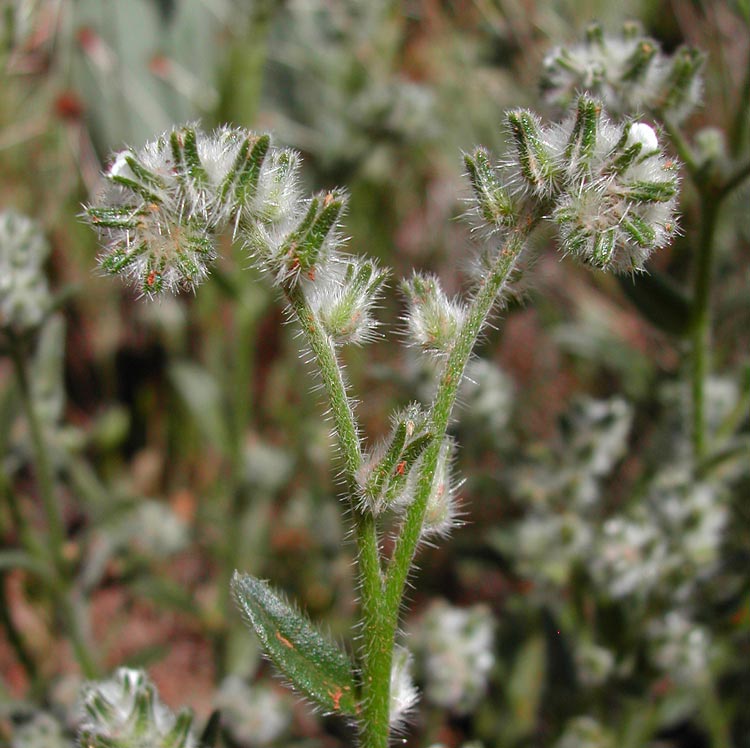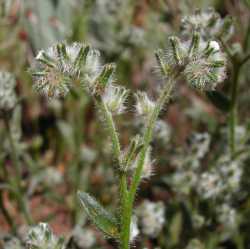Duration: Annual
Nativity: Native
Lifeform: Forb/Herb
General: Slender annual herbs, 10-55 cm tall; stems erect, branched at the base and above; branches ascending, spreading-hirsute.
Leaves: Alternate and sessile, clustered at the base and scattered along the stems; blades lance-linear to oblong, 3-7 mm broad, 1-7 cm long, obtuse at apex, bristly hirsute.
Flowers: White, in scorpioid spikes, these usually paired at the ends of branches, to 15 cm long, densely flowered; calyx lobes linear-lanceolate, 4-10 mm long, constricted above the nutlet, the tips recurved above the constriction, midrib thickened and spreading-hirsute; corolla white, inconspicuous, funnelform, the limb 1-2 mm broad.
Fruits: Nutlets usually 4 per flower, lance-ovoid, 1.5-2.5 mm long, strongly warty, the edges rounded or obscurely angled, the back convex, the groove narrow or broad.
Ecology: Found on desert sands, along arroyos and on hillsides, below 5,000 ft (1524 m); flowers March-June.
Distribution: c and s CA, c and s NV, s UT, AZ, sw NM; south to n MEX.
Notes: Cryptantha is a genus of bristly herbs with white or yellow flowers in spikes that are usually 1-sided and curling like a scorpion-s tail (-scorpioid-). The seeds, called -nutlets- in the borage family, are crucial to identification of the species. As the nutlets are quite small and difficult to examine in the field with a hand lens, it is usually necessary to make a collection of mature material for later identification under a dissecting scope. Cryptantha barbigera is distinguished by being a mostly erect, slender, densely bristly annual with linear to spatulate leaves; calyx erect in flower and constricted with recurved tips in fruit; 4 same-size tuburculate nutlets with rounded margins; and the style longer than the nutlets. Strongly resembles C. nevadensis, but that species often has lax, flexulous branches (ascending in C. barbigera) and a mixture of appressed and spreading hairs on the stems and leaves (spreading hairs only in C. barbigera).
Ethnobotany: Unknown, but other species in the genus have uses.
Synonyms: None
Editor: SBuckley 2010, FSCoburn 2015, AHazelton 2015
Etymology: Cryptantha comes from the Greek krypto, "hidden," and anthos, "flower," a reference to the first described species in the genus which has inconspicuous flowers that self-fertilize without opening; barbigera means bearded.





